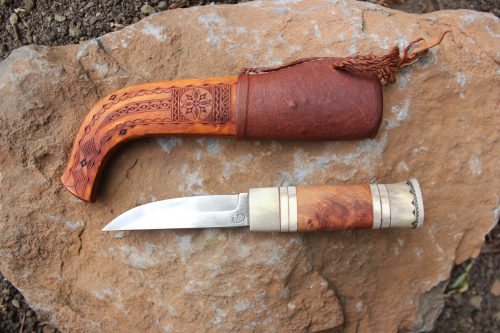On our website, the top searches include, "glutes," "walking," and "butt." So I thought I'd take this chance to say a few words on the subject.
"Callipygian" is an English word of Greek origin. It means “of, pertaining to, or having beautiful buttocks”. The word, (pronounced kal-uh-PIDGE-ee-uhn), is derived from the Greek word “kalli” meaning beautiful, and “pyge” from the Greek word for rump or buttock.
Get Updates on the Latest Blog Posts
This past summer I had the wonderful opportunity to visit the Teaching Drum Wilderness School in the north woods of Wisconsin to teach a Gokhale Method Foundations Course. Teaching Drum has year-long immersion programs, designed to foster awareness in self and community, as well as teach wilderness skills such as hidetanning, basketry, primitive cooking, and lodge construction.
Eating is an essential part of life and can also be a delicious, healthy, and pleasurable experience. But for many people, sitting down for a long, leisurely meal causes tension and pain. Have you
I came home from my visit with the Sami with a treasured possession, my new Sami knife and sheath. I had commissioned my student and friend, Fredrik Prost, a Sami handicraftsman, to make a knife for me and he had it ready for me on my arrival in Sweden.
Fredrik encouraged me to put it into use right away when we cut birch branches to make our “mattresses" in the lavoo (traditional tepee). I would have balked at using a thing so fine and beautiful for an activity so rough and pedestrian, but he insisted - the knife was made to be a working knife. Since my return to California, the knife has harvested okra and zucchini from my garden, trimmed apples from our tree, and cut thin slices of the dried reindeer meat Fredrik sent me home with.
This month I traveled to Northern Sweden and joined my friend Fredrik Prost's community for the annual marking of their reindeer calves. It was an amazing experience I will never forget.
Though the Sami have given up many of their traditional ways, many persist and in the coming months, I will share aspects I found inspiring or educational.
Traditional Sami housing is a tepee or lavoo, with long birch poles forming the main structure (these used to be transported from place to place by domesticated reindeer), and stitched reindeer skin providing the cover. The top of the lavoo is open to let smoke from a fire escape.
Most of us strain our upper backs habitually. Whether we’re slumping forward with our shoulders and head, or exaggeratedly pulling our shoulders back, we irritate the rhomboid attachments in the thoracic spine (upper back). The spinal muscles, either from being overstretched or overstrained, become “knotty” and sore.
Additionally, to the extent that the upper back becomes stiff or even rigid from habitual hunching, it is challenging to stretch and mobilize the regions that most need attention. As with a rusty bicycle chain, stiff areas tend to remain stiff, and mobile areas compensate and become hypermobile.
In this season of shorts and bikinis it is easy for us to pick ourselves apart. Wanting to take care of our bodies is a natural, healthy impulse, but when it gets focused on body image it can become an unhealthy obsession. You can help transform negative thoughts about the shape of your body, or the wrinkles on your face, into positive ones by focusing on posture.
Spring brings renewal. All around us the earth is alive with the sounds and smells of new life. As the weather grows more inviting, your yard and garden may be calling. For many people, gardening and outdoor work are favorite pastimes, yet the fear of back pain can be inhibiting. Let the Gokhale Method help you to thrive alongside your plants!
When planting flowers and digging in the dirt, use hip hinging to save your knees and lower back. Maintain your spinal shape as you bend from the hips. Take a wider stance to reach the ground more easily. When you feel your hamstrings pulling, bend your knees to keep from tucking. Check to see that your knees track over your feet and that your shoulders remain back for good blood flow to your arms and hands. Try resting one elbow or forearm on your thigh as the other hand performs your gardening tasks to reduce the demand on the muscles in your back.
There are few things as disempowering as a broken back. By "broken back" I mean to include painfully herniated disks, significant stenosis, as well as severe muscle tension and other less sustained spinal phenomena that constitute "non-specifc back pain" - and nonetheless hurt like heck. I remember this state clearly, and have some journal entries to fill gaps in my memory - "...maybe I'm paying too much attention to my back. Maybe it's in my head..." 28 years ago, I felt like a broken straw.









